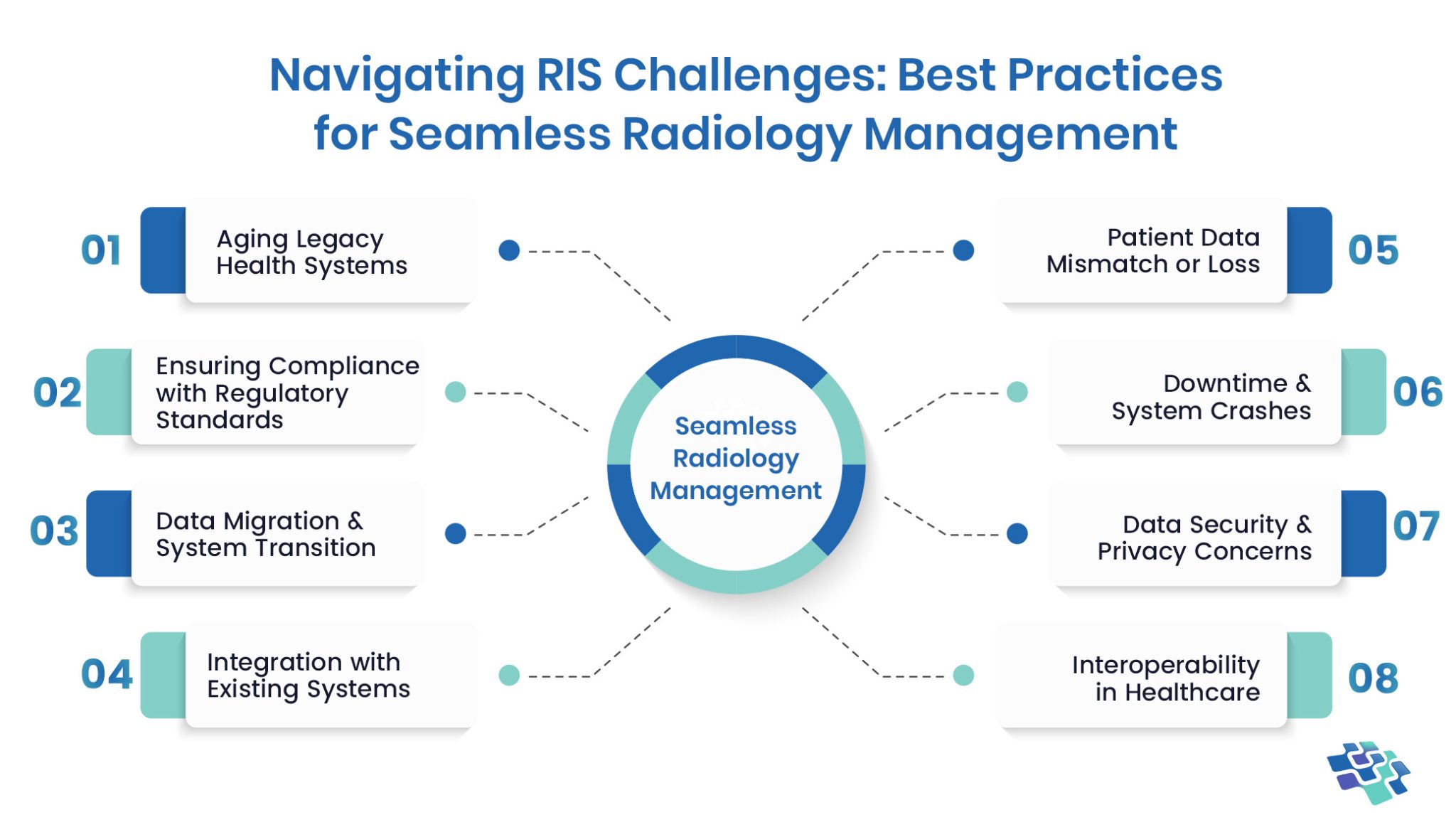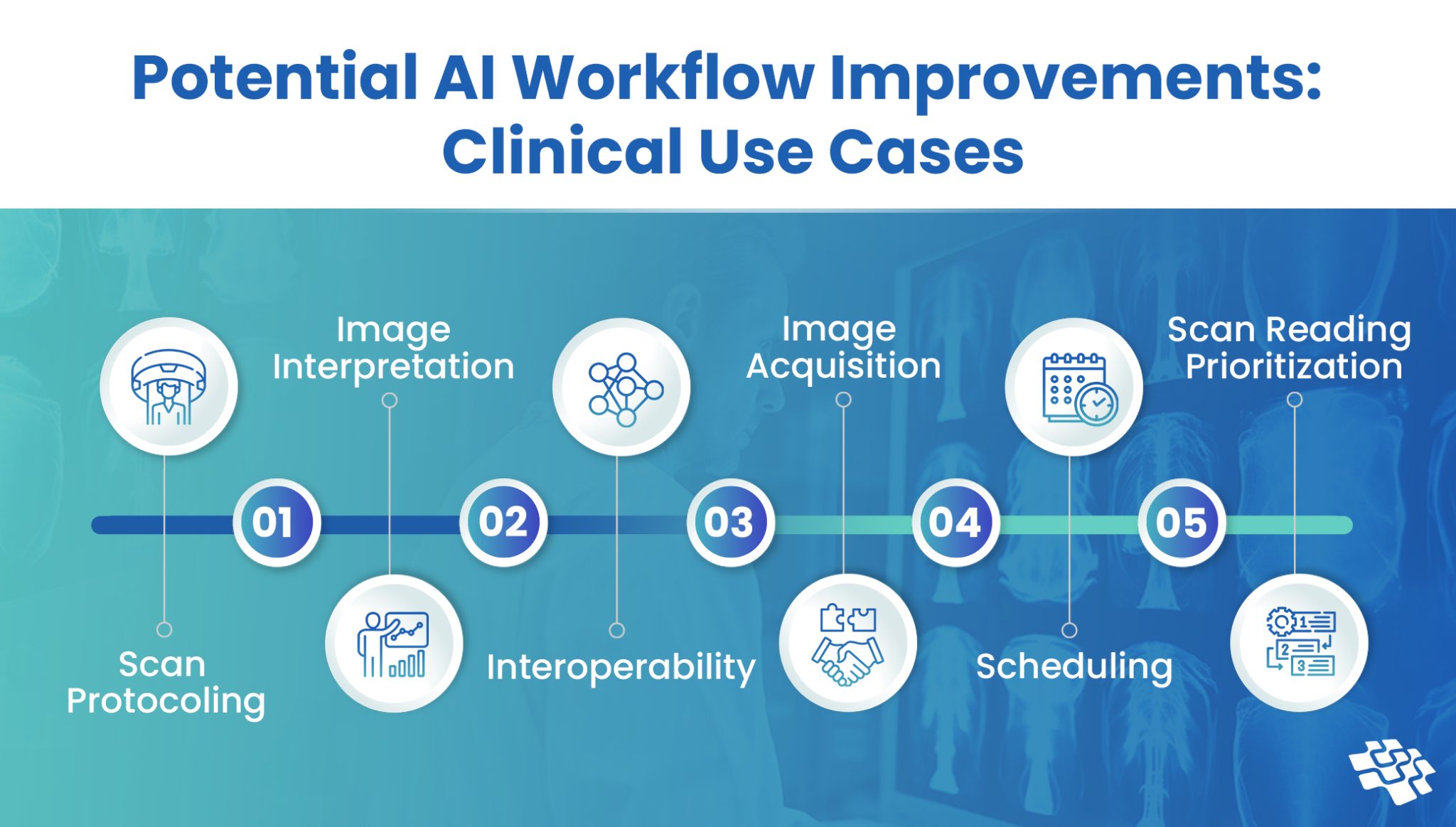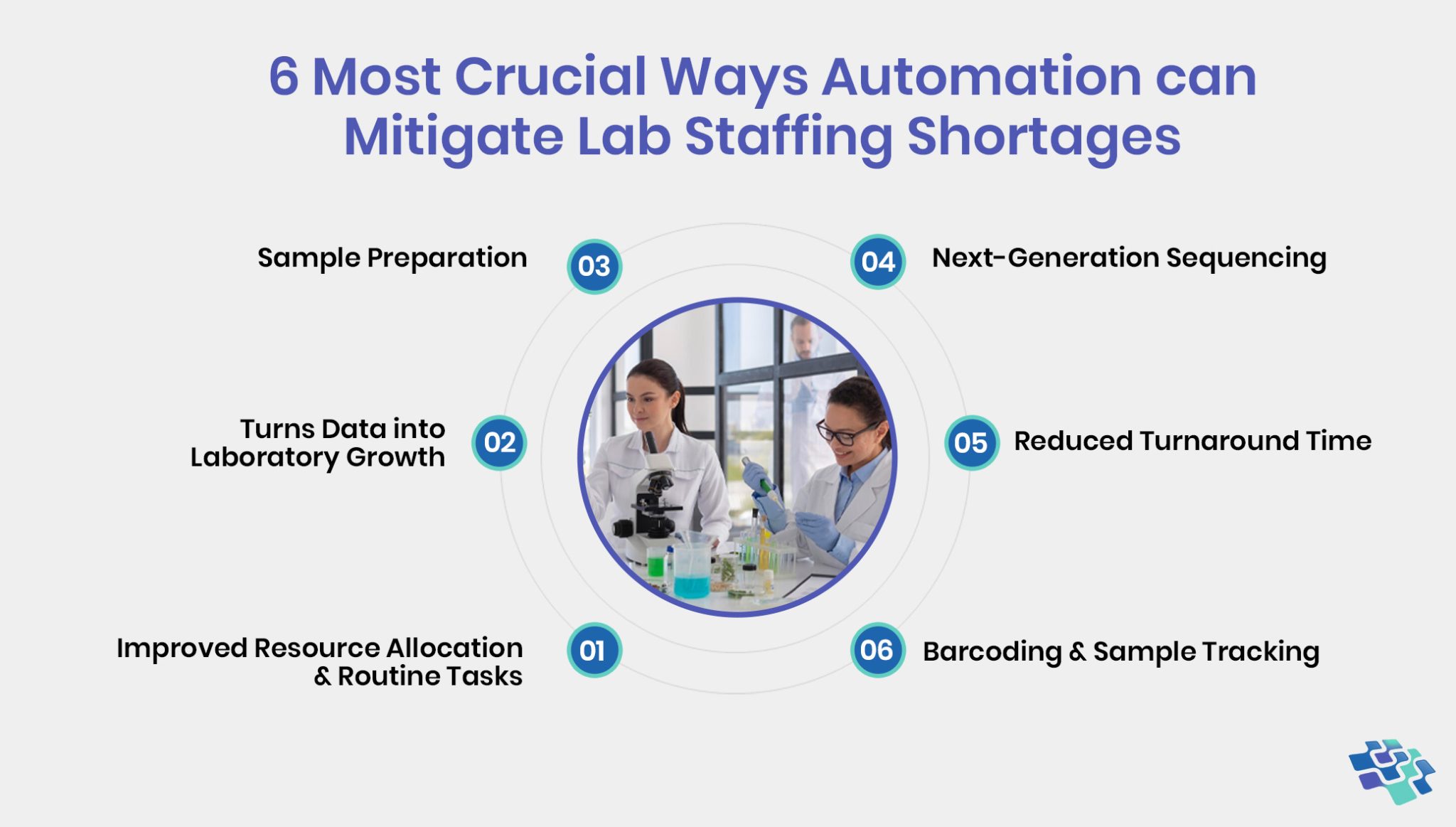Navigating Radiology Information System Challenges
Advanced imaging services are hard to deliver in rural and distant places, where access to specialist expertise is particularly limited. Because of this geographic distance, it is more difficult to coordinate care, which can result in inefficiencies that prolong turnaround times, postpone important treatment choices, and ultimately impact patient outcomes.

Slow Diagnosis Delaying Patient Care? Accelerate Reporting & Enhance Accuracy with Our AI based Clinical Decision Support System!

“The global radiology information system market is expected to witness significant growth at a remarkable CAGR of 7.5% during the forecast period of 2023-2030. The high demand for AI has improved the tracking of radiology imaging orders and billing information. Data gathering and mining have limitless possibilities in medical imaging when enabled through AI. However, by using artificial intelligence in radiology information systems, companies can accelerate the billing process, reduce the risk of errors, and shorten the time-to-market for these advanced products.”- GlobeNewswire
Radiology Information Systems (RIS): A Game-Changer for Healthcare Enterprises
A radiology information system is a robust database system that frequently makes use of an artificial intelligence-based clinical decision support system. It records, maintains, arranges, and monitors radiology image files and patient data. The image and patient data files contain important documents. These could be gathered while the patient is being diagnosed and treated. Medical personnel in radiology frequently use this method to retrieve patient information. The system is utilized to provide patient information to the relevant healthcare providers.
Numerous kinds of radiology information systems exist, including:
- Integrated RIS: It connects to other medical information systems, such as PACS and EMR. A better summary of a patient’s medical history is made possible by such RIS.
- Mobile RIS: These RIS systems operate on mobile devices and are responsive. These systems are accessible when on the go.
How Can Radiology Information System Software Streamline Radiology Workflows?
Modern healthcare workflows in radiology encounter many obstacles that call for effective management solutions. To maximize their radiology practices, lab professionals are looking for solutions. In today’s healthcare system, radiology workflows must be managed effectively. Important elements include arranging patient data and promoting communication between technologists and radiologists. The requirement for integrated radiology workflows is one of the main obstacles in this respect. Radiologists’ and technologists’ tasks can be coordinated by the integrated radiology workflows. However, without the appropriate tools and communication mechanisms, optimizing these operations becomes difficult. To make rapid and precise diagnoses, radiologists depend on quick and easy access to patient data.
Manual data retrieval is frequently a part of the process, which affects patient care and efficiency. This gap can be filled by radiology information system software, which provides real-time access to patient data, improving patient outcomes and workflow efficiency.
How is Information Technology Used in Radiology?
Radiology workflows have been streamlined, and patient management has been transformed by the incorporation of information technology. Several essential features and advantages provided by the radiology information system help imaging departments run more effectively, including:
- Improved Patient Management: RIS facilitates accurate, timely procedures, effective patient appointment management, and streamlined radiology scheduling. It improves accuracy and lowers errors by automating data entry, scheduling, and monitoring. By cutting wait times and producing quicker results, radiology information systems also help to improve patient experiences by making the imaging procedure more efficient and patient centered.
- Enhanced Data Management: For communication and data management, the radiology department depends on the radiology information system. The radiology information system ensures smooth data transfer between departments by integrating with other healthcare information systems, which saves time and promotes improved cooperation and communication. To support billing and reporting processes and keep patient data current, this integration is essential. In the end, this can enhance patient care.
- Better Radiologist Workflows & Workloads: By customizing worklists and reducing administrative workloads with its user-friendly, role-based interface, RIS helps streamline radiologist processes. Radiologists can add comments, protocol information, and signatory approvals using radiology information system software, which also offers real-time exam referral management (approve, hold, or reject). A single interface provides access to vital data, such as scanned documents and technologist comments, improving efficiency through the imaging process.
Benefits of Adopting a Radiology Information System Software
There are numerous benefits to having a radiology information system software in place, such as:
- Providing Information for Research & Quality Improvement Projects: Radiology information system software can be utilized as a valuable data source by gathering and storing a lot of patient data. Radiologists studying radiology can utilize this data to find important trends, patterns, and opportunities for advancement in the discipline.
- Streamlining Patient Workflow: Since everyone utilizes a single centralized system, an RIS lets you get rid of unnecessary chores and enhance staff coordination. For a more efficient and streamlined workflow, the software also enables greater transparency and a clearer understanding of worker allocation.
- Improving Patient Care: Having an RIS in place allows you to treat more patients, diagnose more accurately, and deliver better care. Allowing RIS to manage all manual processes frees up your personnel to concentrate on patient happiness and engagement.
Interoperability Challenges Holding You Back? Connect RIS, PACS, and EHRs Effortlessly with Our Digital Healthcare Software Development Services!
Radiology Information Systems: Common Roadblocks and How to Solve Them
There are weaknesses in even the most complex structures, and RIS is no exception. Despite the many benefits of a radiology information system, healthcare IT workers must remain aware of potential challenges and possess the skills necessary to quickly resolve them. Here, we’ll examine some common issues and provide workable fixes to make sure your RIS continues to be a dependable resource.
 1. Aging Legacy Health Systems
1. Aging Legacy Health Systems
One of the largest issues facing practices today is the aging of legacy health systems, including RIS, PACS, and other essential components. Why? Most radiology information systems were not designed for the internet era, which is the first explanation. Most radiology procedures are performed within hospitals, and second, radiologists and practice staff typically communicate digital data and images. This implies that results and images can be sent by fax, CD, or in person to the patients or recommended doctors. Additionally, they provide a small number of pre-established workflows to manage tech and radiologist workflows, as well as registration and scheduling. In the end, these platforms have been as fully updated and patched as feasible.
Radiology information systems have traditionally been built using a client-server architecture and hosted without the need for backup servers in a different physical location. This implied that the entire practice and its locations would be unavailable in the event of a fire, power outage, or even a security breach that compromised the on-premises server. Many diagnostic imaging facilities and healthcare systems have chosen to house their radiological information systems in public clouds (Amazon, Azure, Google) in recent years. This has made maintaining the practice network (outside of the local area), preserving critical information security, and ensuring proper connectivity more difficult, among other issues.
2. Ensuring Compliance with Regulatory Standards
In the healthcare industry, regulatory compliance is crucial, and RIS adoption is no different. Healthcare facilities are required to abide by strict data privacy and security rules in many countries to protect patient information. The Health Insurance Portability and Accountability Act (HIPAA) in the US requires procedures for handling and protecting patient data. Implementing RIS is made more challenging by the intricacy of fulfilling these regulatory criteria.
To enable compliance, facilities must set up a radiology information system with features including role-based access controls, audit trails, and data encryption. To ensure that all regulatory requirements are fulfilled, compliance frequently calls for cooperation across the legal, compliance, and IT departments, each of which contributes specific knowledge.
3. Data Migration & System Transition
It is frequently necessary to migrate a large amount of data, including imaging histories, diagnostic data, and patient records when switching to a new RIS. Because different systems have different data structures and formats, there is a chance that the data will be lost or corrupted during this complicated procedure. To maintain accuracy and continuity in patient treatment, facilities must also balance daily operations with the downtime needed for data migration and testing.
Data migration may become a drawn-out, disruptive procedure that affects patient services and workflow if it is not planned carefully.
4. Integration with Existing Systems
Achieving a smooth interface with other crucial healthcare systems, including Electronic Health Records (EHRs), Picture Archiving and Communication Systems (PACS), and other specialist diagnostic imaging software, is one of the main challenges in RIS implementation. For radiologists, doctors, and administrators to access and exchange comprehensive, correct patient data across platforms, integration is necessary for continuous data flow between systems. Interoperability minimizes effort duplication between teams and ensures coordinated care.
However, integration may be difficult due to technical constraints. Incompatible software standards, disparate data formats, and legacy systems frequently make integration more difficult. It may take a lot of customizing work to close gaps between interoperability standards, such as Health Level Seven (HL7), and other data-sharing protocols. The time and money needed for RIS installation may increase because of these technological challenges, which frequently need specialized IT resources and knowledge. The smooth transmission of vital patient data may be hampered by data silos and inefficient workflows caused by RIS if it is not integrated properly.
5. Patient Data Mismatch or Loss
Patient data can sometimes vary from that of another patient, or worse, it may vanish entirely. Implement stringent user access rules to reduce human mistakes and prohibit it. Make time for routine data integrity checks. Ascertain the presence of dependable backup systems and their regular testing.
Healthcare IT workers can make sure their RIS stays strong and dependable, prepared to fulfill its crucial role in patient care, with the correct information and preventative actions.
6. Downtime & System Crashes
Every minute of radiology information system downtime can delay diagnoses, disrupt treatment, and impact patient care. Healthcare IT professionals must understand the causes and implement a strategic response plan. Downtime leads to delayed patient care, operational bottlenecks, and financial losses. Common causes include hardware failures (server crashes, disk malfunctions), software bugs (incompatible updates, system glitches), and external threats (cyber-attacks, power outages). Proactive measures like regular maintenance, robust backup systems, and strong cybersecurity protocols can minimize risks.
In case of failure, quick recovery requires emergency response protocols, close vendor collaboration, and transparent communication with stakeholders. Ensuring a resilient RIS infrastructure safeguards efficiency, maintains service continuity, and upholds the highest standards of patient care.
7. Data Security & Privacy Concerns
In today’s digital era, securing the radiology information system is critical to protecting sensitive patient data from breaches. Beyond being an ethical duty, it is a legal requirement under regulations like HIPAA, with non-compliance leading to severe penalties. Data security lapses can erode patient trust and damage institutional reputations. Common vulnerabilities include outdated software, weak access controls, and phishing attacks targeting employees.
Strengthening security requires regular software updates, two-factor authentication, and staff training on cyber threats. Robust network security, including firewalls and encrypted connections, safeguards data in transit. Additionally, maintaining secure backups and a disaster recovery plan ensures data integrity. A proactive approach to RIS security upholds compliance, preserves trust, and protects critical healthcare information.
8. Interoperability in Healthcare
Interoperability in healthcare is a critical challenge for radiology information systems, impacting efficiency, data sharing, and overall patient care. Many RIS solutions struggle to seamlessly integrate with Electronic Health Records (EHRs), Picture Archiving and Communication Systems (PACS), and other hospital systems due to varying data standards and proprietary formats. This lack of interoperability leads to fragmented workflows, delayed diagnoses, redundant tests, increasing costs, and administrative burdens. To address this, healthcare organizations must adopt standardized protocols such as HL7 and FHIR, ensuring seamless data exchange between systems.
Additionally, vendor collaboration and API-driven integrations can enhance compatibility. Prioritizing interoperability in RIS improves clinical efficiency, reduces errors, and enhances patient outcomes by enabling healthcare providers to access comprehensive imaging data across different platforms effortlessly.
RIS Downtime Impacting Efficiency? Ensure System Reliability with Proactive Monitoring & Robust Disaster Recovery Solutions!
The Future of Radiology Information Systems
Radiology information systems are rapidly integrating cutting-edge technologies that improve workflow efficiency and diagnostic accuracy as technology advances. The incorporation of AI and machine intelligence and the move to cloud-based RIS solutions are two significant trends that will change radiology departments and the way patients are treated.
- AI & Machine Learning: By facilitating automated data analysis and improving decision support, machine learning and artificial intelligence in radiology are revolutionizing the way radiologists engage with RIS platforms. Medical practitioners can expedite the diagnostic process by using an artificial intelligence-based clinical decision support system to swiftly evaluate vast amounts of imaging data, spot trends, and even highlight anomalies. AI algorithms, for instance, can help with scheduling optimization, minimizing care delays, and forecasting patient no-shows based on historical behavior. Additionally, by automating repetitive processes like data entry and report production, ML models in RIS can lessen administrative constraints and free up radiologists to concentrate on clinical work.
- Cloud-Based RIS Solutions: Numerous advantages come with the move to cloud-based healthcare solutions, such as increased scalability, lower IT costs, and better data accessibility. Radiology departments can save and retrieve data remotely with cloud-based RIS, providing safe access to patient records and imaging from various places. This feature is especially helpful for remote radiologists or facilities with several locations. Additionally, cloud storage solutions provide scalable storage capacity, which enables businesses to readily grow as data volumes increase without having to invest in expensive hardware upgrades.
Conclusion
Implementing a custom radiology information system is a crucial step in optimizing radiology workflows, enhancing diagnostic precision, and improving overall patient care. A well-designed RIS streamlines scheduling, accelerates imaging workflows, and ensures seamless report generation, minimizing delays and inefficiencies. By integrating advanced interoperability standards, automation, and secure data management, a robust RIS transforms radiology departments into highly efficient, patient-centric hubs of excellence.
NextGen Invent’s artificial intelligence-based clinical decision support system further enhances RIS capabilities by leveraging AI-driven insights for faster and more accurate diagnoses. Our digital health software development services integrate seamlessly with RIS, analyzing medical images, detecting anomalies, and providing real-time decision support to radiologists. By reducing diagnostic errors and expediting report generation, NextGen Invent’s AI-powered solutions empower healthcare providers with precision-driven, data-backed decision-making for improved patient outcomes. Contact us to embark on your digital transformation journey.
Frequently Asked Questions About Radiology Information System
Related Blogs

7 Game-Changing Benefits of Radiology Information System for Enhanced Patient Care & Efficiency
Digital health software development services reduce the likelihood of errors and improve the quality of patient care by ensuring that radiologists and other medical practitioners have immediate access to critical patient data.

Integrating and Adopting AI in Radiology Workflow
AI in radiology has emerged as a desirable collaborator, potentially supporting case interpretation, and helping with several non-interpretive facets of radiological clinic work.

Struggling with Staffing Shortages? Discover How Lab Automation Can Solve the Crisis!
The lack of lab personnel has been an issue for many years and has now reached a critical stage. An estimated 20,000 to 25,000 laboratory technologists are needed nationwide, with vacancy rates as high as 25% in some US regions.
Stay In the Know
Get Latest updates and industry insights every month.
